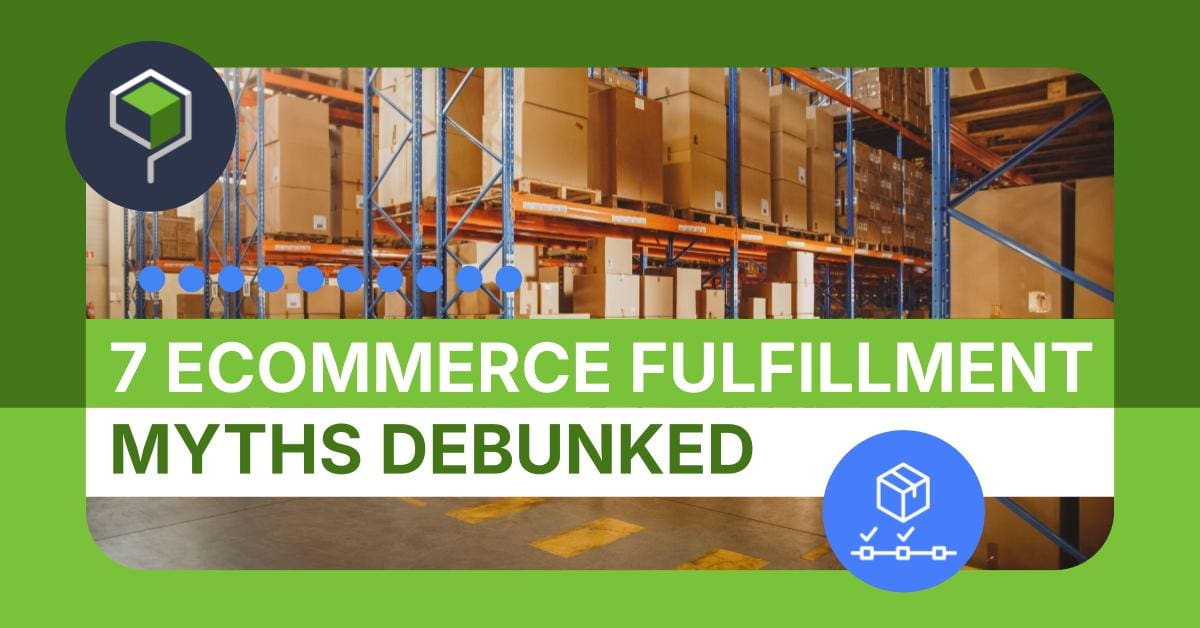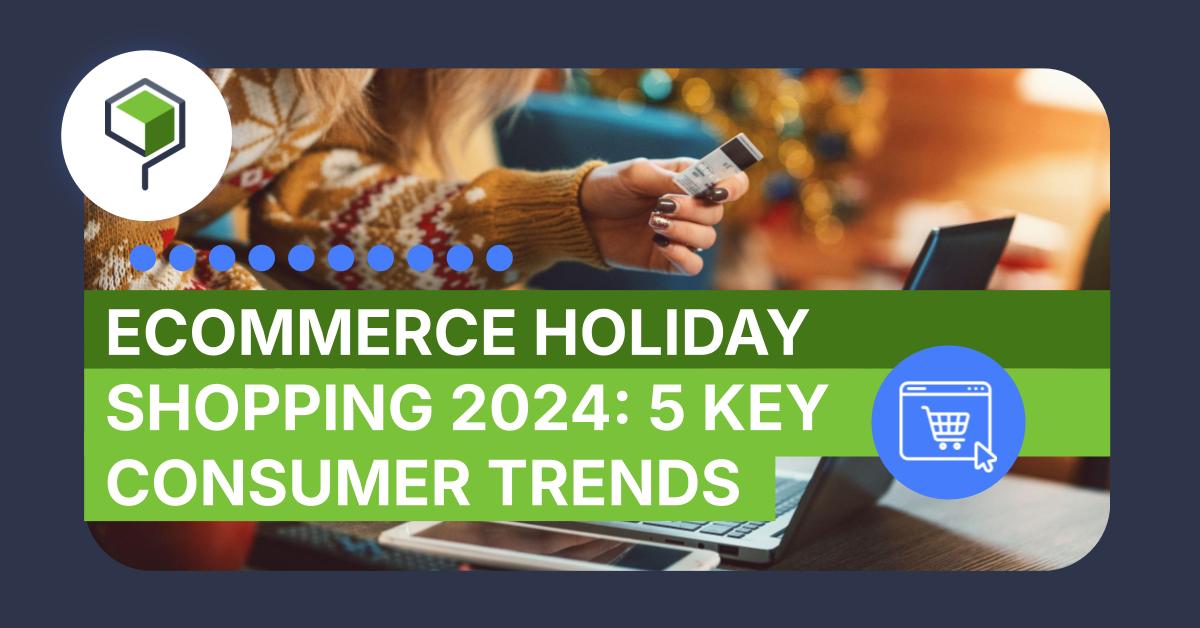7 Ecommerce Fulfillment Myths Debunked

Do fulfillment companies really take care of my brand? Can I keep self-fulfilling offers effectively? Does fulfillment location matter?
Just like any industry, eCommerce fulfillment is rife with common myths and misconceptions that cause confusion at best – and stifle growth at their worst. In this blog, we’re going to tackle a few of the biggest eCommerce fulfillment myths head-on. So, let’s jump in!
1. In-house fulfillment is way cheaper for my business
Outsourcing order fulfillment is a big investment, which can make it offputting for businesses that are practicing self-fulfillment. But although in-house fulfillment might be the cheaper option when you start, it’s difficult to scale in a cost-effective way – and may end up costing you in more ways than just operating costs.
As order volumes increase, growing pains can quickly kick in for your fulfillment operation. More orders require more staff on the warehouse floor and more storage space for inventory. Footing the bill for all of these costs is simply not sustainable for most eCommerce businesses.
Moreover, focusing on the in-house fulfillment process can often be at the expense of other key areas that enable growth, like sales strategies, marketing, and CX management. Over time, neglecting these areas can result in significant opportunity costs.
By choosing a reliable order fulfillment partner, your business and clients will benefit from better economies of scale by leveraging your provider’s infrastructure and technology to scale seamlessly.
2. I need to be right next to my fulfillment center
A very common misconception in the eCommerce industry regarding fulfillment is that choosing a fulfillment company in your local area is the best way to ensure reliable fulfillment services. Being able to visit your partner more easily means more accountability, right? Not necessarily.
While you may be lucky enough to find a great third-party logistics (3PL) provider in your backyard, this isn’t always going to be the case. Prioritizing proximity over other attributes – such as industry expertise, technology stack, and shipping carrier selection – can result in an all-fitting partnership that compromises business growth and makes it more difficult to offer a consistent customer experience.
3. It’s only worth outsourcing order fulfillment if you’re a large company
Third-party logistics often brings to mind images of big companies with massive warehouses and nationwide fulfillment networks – things that can seem overkill for a small eCommerce business.
But as the eCommerce marketplace has grown, so has the number of order fulfillment solutions catering to small and medium-sized merchants who require help with areas like inventory management or coordinating peak seasons – or who want the fulfillment process taken off their hands completely.
While many fulfillment companies implement a monthly order minimum for partnerships, this doesn’t always equate to tens of thousands of orders per month. In fact, ShippingTree works with small business owners who receive as little as 500 orders per month – and still deliver significant cost savings and better operational efficiency!
4. If I outsource fulfillment, I’ll lose control over the brand experience
A common – and understandable – fear of many eCommerce businesses is that bringing in a third-party provider will mean losing control over brand identity. Many fulfillment companies – including Amazon – only offer generic packaging for orders and no value-added services. This means missing out on valuable opportunities to build a branded experience that enhances customer satisfaction.
But outsourcing fulfillment doesn’t have to mean compromising on what makes your brand unique, whether that’s your online store’s custom packaging design or excellent customer service; you just need to select the right fulfillment partner to facilitate it.
As the focus on memorable eCommerce experiences continues to grow, so does the availability of custom services that ensure that your orders aren’t mistaken for an Amazon delivery. ShippingTree offers a range of fulfillment services that elevate the brand experience, including custom packaging, kitting, bundling, and more.
5. My company is too small to benefit from multi-node fulfillment
If you’re a small eCommerce brand, sticking with a dedicated team and one fulfillment center might seem sufficient to cater to your customer’s needs. But it’s where your customers are based – rather than how many you have – that determines the suitability of using multiple fulfillment centers.
If your customer base is distributed across several regions, rather than one densely populated city or metro area, offering rapid shipping to all of your customers is a major challenge. Some customers may be close to your warehouse, while others are very far away. This causes your shipping rates to lack consistency, making understanding cost per order (CPO) difficult.
By using several micro-fulfillment centers in key regions, you can better standardize shipping costs and delivery timeframes, meaning faster, more cost-effective order fulfillment.
6. Small order volumes mean that I don’t need fancy technology
When order volumes are small, it’s easy to get complacent and take an ad-hoc approach to eCommerce fulfillment processes. Think using Excel to manage orders, checking shipment statuses manually, or counting inventory by hand.
While spreadsheets and manual data transfers might be sufficient (if inconvenient) to avoid delays to order fulfillment, this won’t remain so as your business grows. Opening a new market or an unexpected spike in orders can all too easily derail your fulfillment operation and waste valuable time, resulting in avoidable errors or shipping orders late.
A purpose-built order management system or warehouse platform ensures that orders are processed in real-time and shipments can be tracked with ease, avoiding costly mistakes that can damage your reputation.
7. I need to offer rapid shipping to all of my customers
We hear time and time again that fast shipping is the table stakes in eCommerce, that all customers want their orders ASAP – and they’ll go to Amazon and Walmart if you can’t deliver.
Quick home delivery is rising in popularity, but it’s important to understand what your customers think, rather than a generic consumer survey. For many customers, shipping cost is a bigger priority than speed. If you have a free shipping option that guarantees delivery within a few days, this may be more popular than a same-day delivery method where the customer has to foot the entire bill.
So, before you start making sizeable investments in rapid delivery, it’s important to gain an understanding of shipping options that align with what your customers are looking for; your business will be better off for it!
The decision to outsource fulfillment or continue fulfilling in-house is a nerve-wracking one for businesses. eCommerce fulfillment can seem full of pitfalls and risks that can damage the customer experience or present challenges to your brand staying competitive – especially when the barriers to setting up an online store are so low.
To fulfill orders in-house may feel like the cheaper, easier decision, but it risks increasing fixed costs while diluting the rest of your growth initiatives. Outsourcing fulfillment, on the other hand, offers access to scalable infrastructure, advanced technology platforms, and better brand experiences that help you stand out from the crowd. Even small and medium-sized businesses eCommerce businesses can benefit from tailored fulfillment solutions – especially if they partner with a scalable provider like ShippingTree!



